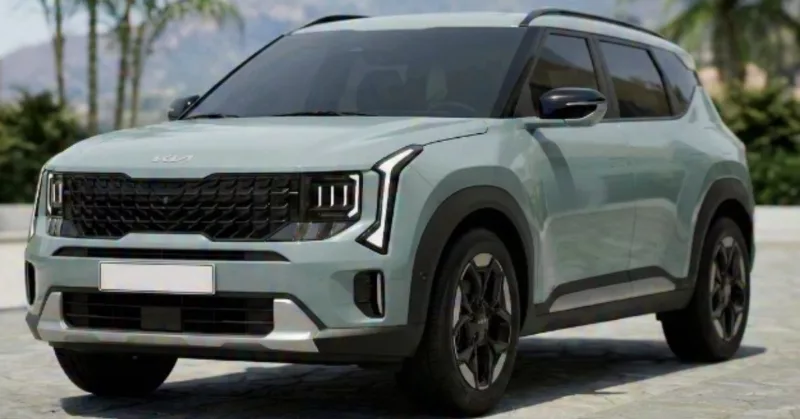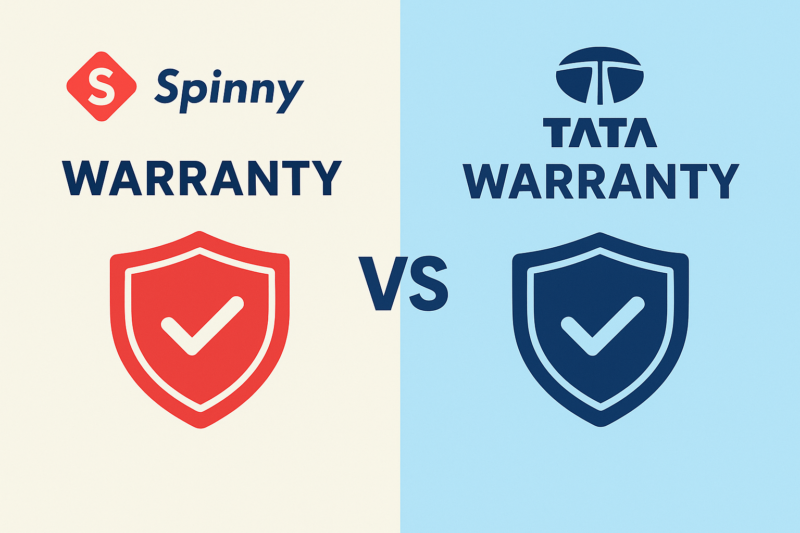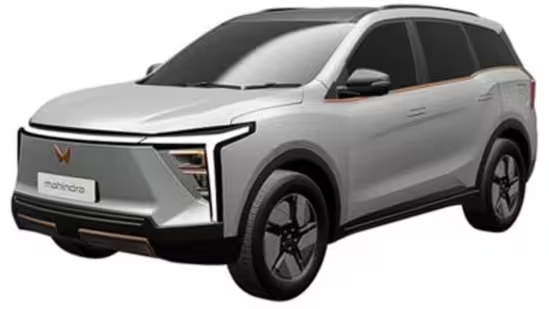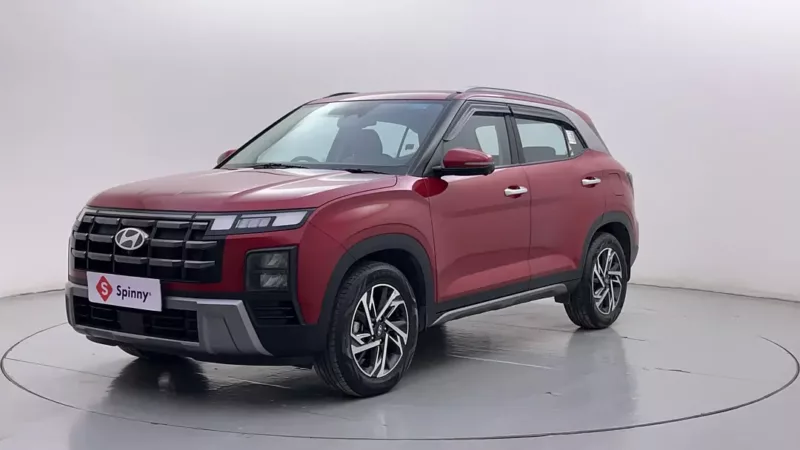Everyone likes owning a car that produces more power and better mileage, and when this comes with a feeling of helping the environment, it just puts the cherry on the cake. These perks are achieved with the help of turbochargers and superchargers. While turbochargers are increasingly gaining popularity in India, superchargers are not that much heard of. The basic purpose of turbochargers and superchargers is to supply more oxygen in the cylinder to burn fuel more efficiently and generate more power, however, they differ from each other in terms of their mechanical functioning. What distinguishes them and how much, let’s learn.
Also Read – Types Of Brakes
What is a Turbocharger?

A turbocharger has two components: a turbine and a compressor. The exhaust gases flow out of the combustion chamber and hit the turbine with substantial pressure and rotates it. The turbine being connected to the compressor, rotates it simultaneously. The compressor draws in fresh air which gets compressed due to the rapid rotation of the compressor. The compressed air is then supplied to the intake of the combustion chamber through a pipe.

Usually, an intercooler is installed between the compressor and the intake of the combustion chamber to decrease the temperature of the compressed air. The suction of compressed air serves more air or more oxygen to burn fuel in the combustion chamber. Turbochargers use the flow of the exhaust gases to compress fresh air that gets supplied in the combustion chamber.
What is a Supercharger?
Instead of using the flow of exhaust gases, a supercharger uses the rotation of the crankshaft to compress the air that gets supplied to the intake of the combustion chamber. A gear connected to the crankshaft supplies rotation to the supercharger through a pulley, and the supercharger uses the rotational motion to squeeze air in compact space with the help of rotors, screws, or impeller. The main job is to draw air in, compress it, and supply it to the combustion chamber.
Also Read – Types Of Automatic Transmissions

In Roots supercharger, two solid rotors mesh into each other much like the arrangement of gears. One of the rotors is supplied by rotational motion through the pulley, and both rotors rotate rapidly in synergy to suck air from the filling side. The air gets trapped between the lobes of rotors, gets compressed, and then discharges through the discharge side. The Roots superchargers are the oldest ones and were introduced with Mercedes Kompressor cars in 1923.
[x_video_embed type=”16:9″][/x_video_embed]In a twin-screw supercharger, the air is drawn in by the rotation of two worm-gear-shaped rotors meshed into each other. Unlike the Roots supercharger, the gap between the rotors conically tapers down the discharge side. The space that air gets trapped in decreases down the flow due to tapering and squeezes the air, and the air that flows through the conical taper also gets compressed. Then the compressed air blows out the discharge side.
A centrifugal supercharger draws air in with a rotating impeller that is encased by a hub. The centrifugal force radiates the air outward which means air leaves from the impeller at high speed and low pressure. A diffuser that consists of some fixed vanes surrounding the impeller turns the air’s pressure low to high, and speed high to low. This happens since the air molecules lose their velocity by hitting the vanes and increase their pressure. Finally, this pressurized air flows out of the discharge side.
[x_video_embed type=”16:9″][/x_video_embed]Difference between Turbocharger and Supercharger
Turbocharger | Supercharger |
Turbochargers use the kinetic energy of the exhaust gases to rotate the turbine | Superchargers draw the rotational power from the crankshaft of the engine |
Turbochargers are not directly connected to the engine. | Superchargers are directly connected to the engine. |
Turbochargers are equipped with wastegates that reduce emission. | Superchargers don't have wastegates and emit more smog as compared to turbochargers. |
Complex construction | Simpler construction as compared to turbochargers |
Since the turbine takes time to spool up, the system experiences turbo lag. | Instantaneously boosts the engine’s power |
Advantages of the Turbocharger
- To produce more power, the turbocharger utilizes the flow of the exhaust gases that would otherwise go to waste. Research suggests turbochargers are 20% to 25% more fuel-efficient than superchargers. So, from an efficiency standpoint, a Turbocharger is a much more lucrative deal.
- Turbochargers allow the manufacturers to downsize the engines they equip their cars with since the same amount of power can be generated from a smaller engine. When you use the peaks of power of a turbocharger, you certainly won’t get any mileage benefits, but when the vehicle is driven at normal speeds, a smaller engine and better burning of fuel do increase the mileage.
Disadvantages of the turbocharger
- It takes a bit of time in the process of exhaust gases flowing out, hitting the turbine, rotation of the compressor, and generating more power. This creates turbo lag, so basically when you push the pedal, you actually need to wait for a few seconds to let that turbo power come into action.
- The turbo power can only be generated after a specific exhaust speed that relates to engine speed. That’s why the manufacturers specify the engine speed range (in rpm) between which you get the turbo power functioning.
- More engine oil is required as apart from the engine, the turbocharger needs to be lubricated constantly.
Advantages of the Supercharger
- Since the supercharger takes rotational power directly from the crankshaft, you get increased power in action as soon as you push the pedal and you don’t need to wait as you have to in the case of the turbocharger.
- Since Superchargers heat-up is relatively less, they don’t need as much lubrication as turbochargers do, especially the root-type and the twin screw-type superchargers.
Disadvantages of Superchargers
- Being connected to the crankshaft, Superchargers use some of the engine’s power to operate themselves. This means the overall power output may be lower on supercharged cars as compared to turbocharged cars.
- The kinetic energy of exhaust gases isn’t utilized in superchargers.
- Since the engine has to power the vehicle as well as the supercharger, they need to be built for greater force exertion.
- Superchargers are 20-25% less fuel-efficient than turbochargers.
Why Are Turbochargers More Popular Than Superchargers In Production Vehicles?
Turbochargers beat superchargers big time when it comes to production vehicles. They not only cater to the ever-increasing requirement of improving fuel efficiency but also reduce the emission helping the automakers comply with strict greenhouse gas emission standards. Moreover, turbochargers allow the automakers to downsize the engines, as a turbocharged engine is able to produce the same power as a larger non-turbocharged engine.
Can a supercharger increase fuel mileage?
It’s quite the opposite. Superchargers decrease fuel mileage as they are directly connected to the engine’s crankshaft. As a supercharger draws its rotational energy from the engine, it has a parasitic effect on the engine and increases fuel consumption. The more the revs climb up, the more fuel is used to operate the supercharger.
Can you turbocharge or supercharge any car engine?
Yes, you can add an aftermarket turbocharger or supercharger. However, it is vital to know that this can be immensely expensive, and is not generally advisable. Moreover, multiple other factors need to be analysed before installing an aftermarket turbocharger or supercharger. For example:
- Can the ECU of the car handle power boost?
- Can the injectors supply extra fuel?
- Do you use fuel of adequate quality, pressure, and volume?
- Is the apparatus installed to sense knocks?
- Is there enough extra space for a supercharger or turbocharger?
- Are pistons, valves, and other engine components capable of handling the more powerful explosion in the combustion chamber?
How much horsepower does a supercharger add to a car engine?
Adding a supercharger to the engine can add 50 to 100 horsepower.
How much horsepower does a turbocharger add to a car engine?
Adding a turbocharger to the engine can add 70 to 150 horsepower.
List of Cars with Turbocharger and Supercharger
In India, cars with turbochargers are superchargers are
Turbocharged | Supercharged |
Tata Nexon | Audi S5 Sportback |
Renault Kiger | Jaguar F Type |
Nissan Magnite | Range Rover Autobiography SV |
Tata Altroz | Range Rover Sport SVR |
Hyundai Grand i10 Nios | Volvo XC90 |
Mahindra XUV300 | |
Hyundai Creta | |
Many more |
Turbocharger vs Supercharger Summary
Both turbochargers and superchargers are effective methods to increase the power and performance of an engine. However, turbochargers are preferred over superchargers, as they increase fuel economy, and reduce waste gas emission. While the turbo lag is not a likeable trade-off, it’s a small price to pay for a slightly lower emissions.
Nonetheless, if you are looking for a turbocharged car, you have a wide range to choose from, the cheapest one being the Hyundai Grand i10 Nios with the ex-showroom price of Rs 5.43 – 8.45 lakhs. And if a supercharged car is your choice, you would have to go to the luxury segment. The most affordable supercharged car you can own is the Audi S5 Sportback with an ex-showroom price of Rs 84.23 lakh.
FAQs about Turbocharger vs Supercharger
Q. What are bi-turbo and twin-turbo?
Twin-turbo and bi-turbo basically mean the arrangement of two turbochargers. In bi-turbo, the two turbochargers function independently and in twin-turbo, the two turbochargers work in series. In twin-turbo a small and big turbocharger are paired, the small one spools up the power quickly to minimise the turbo-lag and when the exhaust flow increases the bigger one magnifies the boost.
Q. What is the speed of the centrifugal supercharger?
The impeller of the centrifugal supercharger revs up around 50,000 to 60,000 rpm.
Q. How much power do the superchargers and turbochargers increase in an engine?
A turbocharger or a supercharger can increase the power of the engine by 30-40%.
Q. How does the engine drive the supercharger?
Superchargers are connected to the crankshaft that induces rotational motion from the engine. Crankshaft transmits the rotation to superchargers via either a pulley or multiple gears.
Q. Do superchargers also need intercoolers?
An intercooler is a vital necessity after compressing the air, as the compressed air becomes extremely hot. So, an intercooler is necessary with both superchargers and turbochargers.
Q. Is it easier to turbocharge or supercharge?
Installation of both turbochargers and superchargers is quite a complex process. However, if compared, the construction of the turbocharger is more intricate.
Q. Do superchargers shorten engine life?
A supercharger can shorten an engine’s life, if the engine components are not manufactured to handle the stress the supercharger adds to the engine’s functionality. This can happen usually in the aftermarket addition of a supercharger.
Q. Which is better: turbocharger or supercharger?
The main purpose of a turbocharger or supercharger is to send more oxygen for combustion in the combustion chamber, increasing power generation. They both serve this purpose effectively, however, they both have their additional benefits and trade-offs. A turbocharger provides better fuel efficiency and reduces emission, but boosts power at a specific rpm resulting in turbo lag. A supercharger instantaneously boosts the engine’s power but results in more fuel consumption.
Q. How much power do the superchargers and turbochargers increase in an engine?
A supercharger can increase an engine’s power by 50 to 100 horsepower. On the other hand, a turbocharger can increase an engine’s power by 70 to 150 horsepower.



